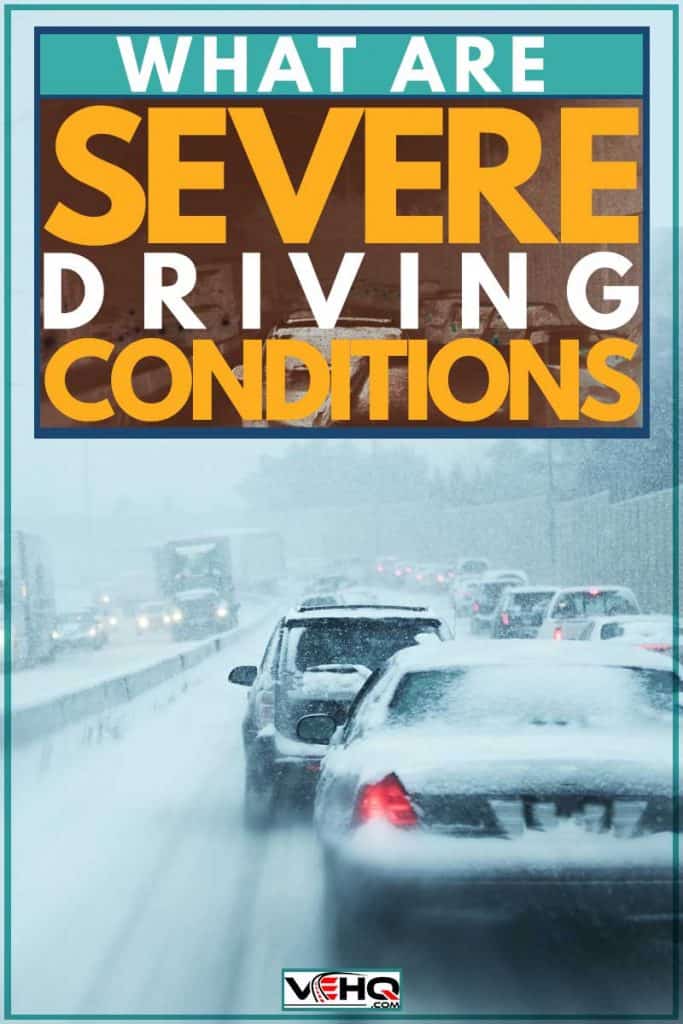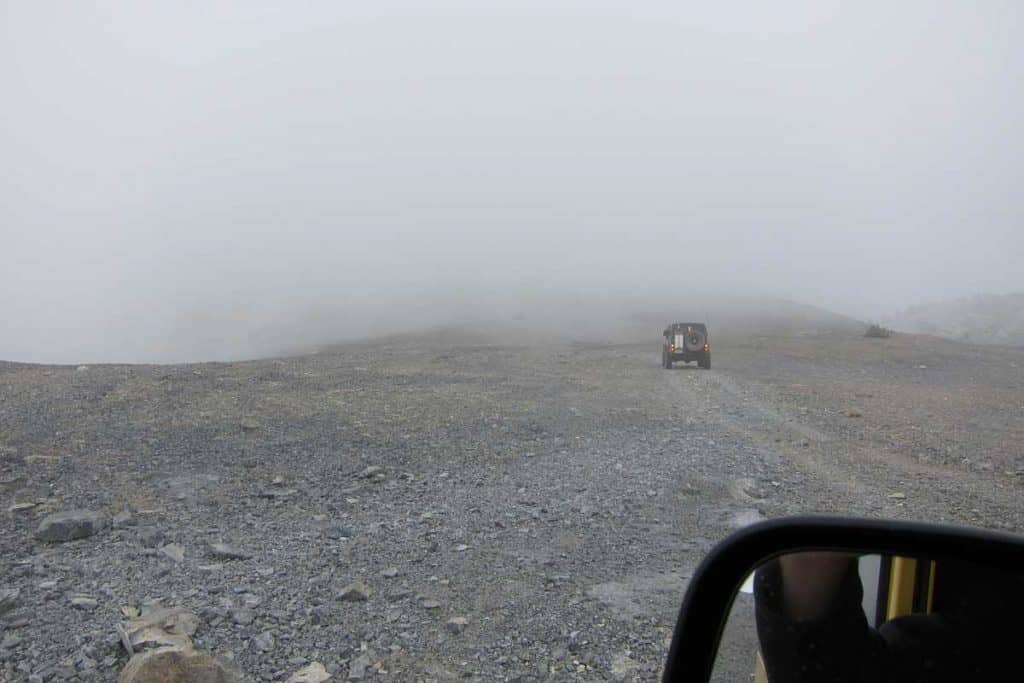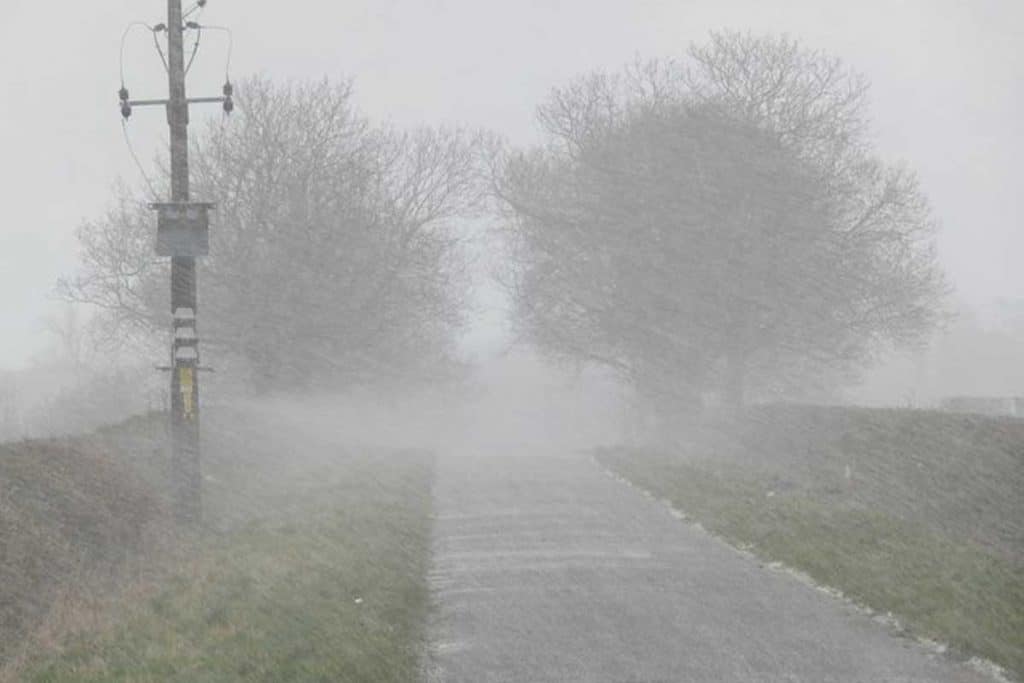 Sometimes you may be faced with a situation where you need to drive in unfavorable conditions. Sometimes you have to drive a little bit risky to make it to the nearest mechanic. It's even possible you could be driving in adverse conditions without even realizing it. So what are severe driving conditions? We've gathered a detailed list of conditions that are severe for driving.
Sometimes you may be faced with a situation where you need to drive in unfavorable conditions. Sometimes you have to drive a little bit risky to make it to the nearest mechanic. It's even possible you could be driving in adverse conditions without even realizing it. So what are severe driving conditions? We've gathered a detailed list of conditions that are severe for driving.
The kinds of severe driving are as follows:
- Intense weather conditions such as snow, ice, sleet (or a combination of the three), rain, fog, and hail
- Frequent stopping and starting, specifically in the heat
- Frequent short trips
- Whenever you're towing or carrying something heavy
- Driving on abnormal roads
- Often driving up and down steep hills or mountains
- Rapid stopping
In a sense, severe driving conditions are sometimes normal conditions in our eyes. Some of these conditions are beyond our control. We will be going into detail for each kind of severe driving condition, along with suggestions for each one.
[toc]
What is Considered to be "Normal" Driving Conditions?
According to Cottman Auto Care, many manufacturers say that driving between 12,000 to 18,000 miles per year is standard; anything less or more than that isn't normal, but not always severe. That is unless you're not doing your routine check-ups and oil changes when recommended.
It's difficult to drive in normal conditions. You'd have to have clear skies, smooth roads, ample space to brake when needed, no weather hazards, and as few cars on the road possible. This is why we say some severe driving is normal driving to all of us.
Driving in Intense Weather
Rain/Sleet/Snow
Of course, a rainy day won't make for a pleasant drive. Neither will sleet or snowy day. But it is fun to play in. The problem with rain, sleet, or snow is that the roads become wet and slippery. This makes it difficult for your tires to maintain traction when driving. Additionally, depending on how heavy it's raining or snowing, seeing the road can be tricky too.
When the weather calls for this type of weather, add extra time to your commute. You'll need it because rushing to get somewhere in this type of weather is risky. Hydroplaning is your biggest enemy; it can cause you to drive out of control, into the side of the road, or even another vehicle. When driving, increase your distance from the car in front of you. This will reduce the chances of a collision. Always use your headlights so that other cars can see you coming and so you can see the road better. To avoid a drastic increase in the risk of hydroplaning, don't drive through big puddles. Driving through puddles could mess up your engine, and it could cause you to hit an unseen pothole.
iDriveSafely advises that you be much more alert on the road if this is the first rainfall in a long time. Substances on the road like engine oil can mix with the rainwater and cause even more slippery roads.
Fog

Fogs are whenever clouds reach the ground. How thick it ends up being will vary. It depends on how humid it is outside and how substantial the amount of water vapor is in the air. According to National Geographic, there are four main types of fog: radiation, advection, valley, and freezing. Radiation fog is when the heat evaporates from the ground. Advection fog is warm, moist air touching the cool ground. Valley fog is when mountains trap dense air. Freezing fog is when fog freezes on to surfaces like trees or spider webs.
No matter what kind of fog you encounter, your vision of what's in front of you is significantly reduced. Meaning it becomes harder to see obstacles that may be in front of you. When driving in the fog, drive slower and with greater distance between cars in front of you. Contrary to what many believe, using your high beams is a bad idea; they cause glare, which is another driving danger that makes it harder for you to see. To ensure you're driving in the right lanes, pay attention to the lines in the road. Often they'll have a reflector that your lights will shine off of to help you see them. If the fog becomes too thick to see, pull to a parking lot or the side of the road (with emergency lights on) until the fog decimates.
Keep your windshields from freezing by clicking here!
Hail

Hail is potentially one of the worst driving conditions to drive in. You'd be driving in weather where ice the size of baseballs (potentially) can damage your exterior. Avoid driving in a hailstorm at all costs. If you happen to drive into a hailstorm, find an overpass to drive under for protection until it's over.
If your car is parked outside during a hailstorm, a helpful tip is to layer your car in towels or blankets that will absorb the damage from the hail.
Protect your car from hail with these simple tips!
Constant Stopping and Starting
Traffic is never fun to deal with. You're moving at speeds way below the speed limit, people trying to cut you off to move lanes; all of it that will cause you to stop and start for long periods. Continually doing this will harm your car in the long run. But if you don't encounter traffic too much, this won't pose much of an issue.
For those drivers who commute through or live in the city, you'll want to do maintenance often. When you're stuck sitting in traffic, the ventilation system of your car's engine operates at its weakest. This lets engine deposits to slowly build up without you even knowing. Additionally, the highly increased usage of your brakes can wear them out much faster.
The reason this is considered severe driving is that these effects can happen unexpectedly. Going a long time without checking your brakes or oil could risk something happening to your car in idle while in traffic.
To avoid that risk, we recommend the following maintenance tips:
- Add fuel injector cleaner to your gas (to help remove deposits)
- Get an oil change more frequently
- Check your brake fluid on your next oil change
Frequent Short Trips
The problem with short trips isn't the trip itself; it's the (lack of) time your car warms up on that trip. Your engine needs to be able to warm up. Inside the engine is your typical oil and fluids, but there can also be condensation from cold temperatures. That water is present with the oil. If your car warms up long enough, that condensed water will boil off. However, without your vehicle reaching a warm enough temperature, the oil can't lubricate your engine correctly. That is what can cause eventual wear and tear.
Towing or Carrying Weight
Towing with your car may be a bit of an obvious driving hazard. You're lugging probably a considerable amount of additional weight, turning difficulties, and reduced visibility. The chances of accidentally colliding with something (or someone) is higher.
The amount of focus needed when driving while towing something is much higher. You need to have much better judgment for whenever you want to pass another driver on the highway. Acceleration and speed can be tricky and dangerous if not properly managed. The cargo being towed can also sway side to side while in motion.
To avoid as many risks as possible, invest in towing mirrors for visibility, leave enough space before merging lanes, and never haul more than your car is capable.
Learn how to use tow or haul mode here!
Traveling on Abnormal Roads
Note that some cars, like a Ford F-150, are capable of driving on abnormal roads. However, that doesn't change the fact that it's still severe driving. Some examples of abnormal roads include off-road, through bodies of water, or rocky paths.
Driving on any of these kinds of roads requires extreme caution. It's much easier for debris or water to get inside the bottom of your vehicle and later cause damage. No matter what, travel these roads at mild speed. Driving at speeds that you would operate on a typical highway will risk you losing control of your vehicle. If you crossed over a body of water, Ford recommends that drivers drive extremely slow, lightly using the brakes to dry them off and make sure they're still working correctly.
Driving on Mountains/Hills
Regularly traveling up and down mountains means your car exerts more power accelerating when going up or braking when going down. It also means you're going on a road that's narrower and possibly has more curves.
When going up or down mountains often, remember these tips from Roadtrip America to keep yourself and other drivers safe:
- Instead of using your brakes, shift to a low gear when declining
- Don't go faster than you should
- Give drivers going up the hill the right of way
- Don't travel along the centerline (most drivers have a habit of doing this)
If you make frequent journeys on mountains and hills, you'll need to do regular maintenance on your vehicle more frequently. Switching to an engine oil made for this kind of travel will be ideal.
Rapid Stopping
Also known as hard braking, this form of severe driving can cause damage to your vehicle and others around you. Traveling very fast to a rapid stop can overheat your brakes, dislocate your drive shaft, or mess up your anti-lock brake system. If none of these occur, check your tires after your drive is complete; you might have made a flat spot on your tire.
Slamming the brakes when other cars are on the road could cause accidents, especially when the roads aren't optimal. You can risk losing control of your vehicle and colliding with something.
Conclusion
What you thought to have been "normal" driving turns out to not be normal at all. But we hope that we've provided you with the information that will help you become a more cautious driver. Just remember to leave space between cars, don't drive when the situation is severe, and keep an eye on your engine.
